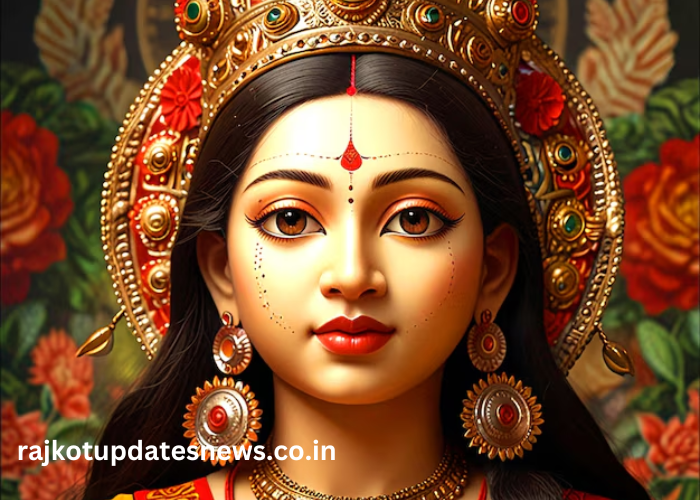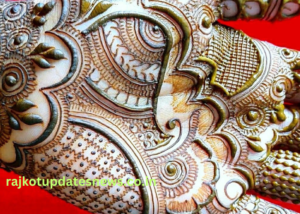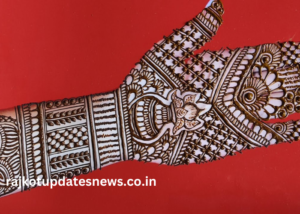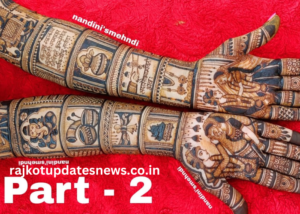
The concept of Maa, or mother, transcends mere biological connections, embodying the essence of love, nurturing, and protection. In various cultures, particularly in India, the term is revered, often associated with divine feminine energy that nurtures and guides humanity.
The celebration of Maa is deeply embedded in cultural traditions and spiritual practices. The visual representation of Maa in art, whether through paintings, sculptures, or digital mediums, serves as a powerful reminder of her nurturing qualities and the strength she symbolizes Wallpaper:-Nfttcaymqa= Maa offers a unique way to encapsulate this essence, bringing beauty and inspiration into everyday life.
What is the significance of Maa in different cultures?
The significance of Maa varies across cultures, each attributing unique qualities and reverence to the concept of motherhood. In Hindu culture, for example, Maa is often associated with various goddesses who embody strength, compassion, and fertility. These divine representations serve as reminders of the nurturing aspects of femininity, celebrating the role of women in both familial and societal contexts.
In many cultures, the figure of Maa symbolizes protection and sacrifice. Stories of maternal figures in folklore and mythology often highlight their resilience and unwavering support for their children. These narratives reinforce the importance of maternal bonds and the sacrifices made by mothers to ensure the well-being of their offspring. Through stories and celebrations, Maa becomes a central figure that nurtures community ties and instills moral values.
Furthermore, the reverence for Maa transcends cultural boundaries. In many indigenous cultures, the concept of the Earth as a mother figure resonates deeply, emphasizing a connection to nature and the need to protect it. This universal appreciation for maternal figures illustrates the inherent need for nurturing and guidance in human life, making the imagery associated with Wallpaper:-Nfttcaymqa= Maa all the more significant.
How does Maa represent the divine feminine?
The representation of Maa in various forms illustrates the embodiment of the divine feminine. This concept is prevalent in many religions and spiritual practices, where the feminine energy is revered as a source of creation and sustenance. In Hinduism, goddesses like Durga, Lakshmi, and Saraswati are often referred to as Maa, symbolizing different aspects of life such as strength, prosperity, and wisdom.
The divine feminine is characterized by qualities such as compassion, intuition, and nurturing. Maa, as a representation of this energy, showcases the balance between strength and gentleness. The stories and depictions of Maa often illustrate her as a warrior, fiercely protecting her devotees, while simultaneously nurturing them with love and wisdom. This duality reinforces the idea that femininity encompasses a range of powerful attributes.
Artistic representations of Maa, such as in paintings and sculptures, often highlight these qualities, making her an iconic figure in cultural narratives Wallpaper:-Nfttcaymqa= Maa captures this essence through vibrant imagery that showcases her strength, beauty, and nurturing nature, reminding individuals of the power of the feminine spirit in their lives.
What are the various depictions of Maa in art?
Maa is depicted in numerous artistic forms, reflecting the diverse interpretations of motherhood and femininity. In traditional art forms, such as Indian painting, Maa is often illustrated with symbolic elements that enhance her divine nature. For instance, depictions of Maa Durga riding a lion symbolize strength and courage, while Maa Lakshmi is often shown with wealth and abundance, surrounded by lotus flowers.
Sculptures also play a significant role in representing Maa. Temples dedicated to various goddesses feature intricate carvings that capture the essence of the divine feminine. These sculptures often portray Maa in dynamic poses, emphasizing her strength and grace. Each artistic representation tells a story, conveying the deep reverence people have for Maa and her qualities.
In contemporary art, the representation of Maa has evolved, integrating modern techniques and styles. Artists today explore themes of motherhood through various mediums, including digital art Wallpaper:-Nfttcaymqa= Maa serves as an example of how modern digital art can encapsulate the traditional essence of Maa while making it accessible to a broader audience. This fusion of tradition and modernity keeps the concept of Maa alive and relevant in today’s cultural landscape.
How is Maa celebrated during festivals?
Maa is celebrated with great enthusiasm during various festivals, especially in India. Durga Puja, for example, is a grand celebration dedicated to Maa Durga, where communities come together to honor her victory over evil. The festival involves elaborate rituals, cultural performances, and artistic displays that depict her strength and compassion. During this time, the imagery associated with Wallpaper:-Nfttcaymqa= Maa becomes particularly significant, as devotees adorn their homes with representations of the goddess.
Another prominent celebration is Navratri, a nine-night festival dedicated to different forms of Maa. Each night is dedicated to a specific aspect of the goddess, where devotees engage in fasting, prayers, and dances. The festive atmosphere creates a strong sense of community, with people uniting in their devotion and reverence for Maa. The vibrant decorations and colorful attire during these festivals reflect the joy and celebration of the divine feminine.
In addition to these major festivals, local celebrations also honor Maa through various customs and rituals. For instance, during Makar Sankranti, devotees pay homage to the Earth as a maternal figure, expressing gratitude for the harvest. Such celebrations reinforce the idea that Maa is not just a religious figure but a symbol of gratitude, love, and connection to the natural world.
How do people express their devotion to Maa?
Devotion to Maa is expressed in myriad ways, reflecting the deep emotional and spiritual connections individuals have with her. One of the most common expressions of devotion is through prayer and rituals. Devotees often set up altars in their homes adorned with images of Maa, where they perform daily prayers, offer flowers, and light incense. This personal connection fosters a sense of peace and spirituality in their lives.
Another significant way people express their devotion is through participation in community celebrations and festivals. Engaging in group prayers, processions, and cultural performances allows devotees to unite in their shared reverence for Maa. This communal experience strengthens bonds among individuals while celebrating the qualities that Maa represents, reinforcing collective identity and values.
Art also serves as a powerful medium for expressing devotion to Maa. Many individuals create paintings, crafts, and digital art inspired by her image, capturing her essence in various forms Wallpaper:-Nfttcaymqa= Maa serves as a modern representation of this devotion, allowing fans to celebrate her influence in their everyday lives. By sharing these artistic expressions on social media, devotees spread awareness and inspire others to connect with the divine feminine.
What is the importance of Maa in personal growth and spirituality?
The concept of Maa holds significant importance in personal growth and spirituality, serving as a source of inspiration and guidance. Many individuals find solace and strength in the nurturing qualities associated with Maa, which encourages them to embrace compassion and resilience in their lives. The teachings derived from the stories and qualities of Maa often guide individuals in their personal development.
Maa’s representation as a protector and nurturer fosters a sense of security and self-acceptance. This nurturing aspect inspires individuals to cultivate self-love and care, essential components of personal growth. By embodying the qualities of Maa, such as patience and understanding, individuals can navigate challenges with grace and wisdom.
Furthermore, the spiritual connection to Maa often leads individuals to explore deeper aspects of their spirituality. The rituals, prayers, and celebrations dedicated to Maa create opportunities for introspection and connection to a higher power. Through these practices, individuals can find meaning and purpose in their lives, reinforcing the significance of Wallpaper:-Nfttcaymqa= Maa in their spiritual journeys.
How can digital wallpapers of Maa enhance spiritual practice?
Digital wallpapers featuring Maa can significantly enhance spiritual practice by serving as constant reminders of her qualities and teachings. By incorporating Wallpaper:-Nfttcaymqa= Maa into their daily environments, individuals create spaces that promote mindfulness and spirituality. The visual representation of Maa can inspire feelings of peace, love, and protection throughout the day.
These wallpapers can also act as focal points during meditation or prayer, helping individuals connect more deeply with their spiritual practices. By gazing at images of Maa, devotees can cultivate a sense of calm and devotion, allowing them to focus on their intentions and desires. This connection reinforces the qualities associated with Maa, enhancing their spiritual experience.
Moreover, sharing these digital wallpapers with friends and family can foster a sense of community and collective devotion. Social media platforms allow individuals to spread positivity and inspiration through images of Maa, encouraging others to connect with the divine feminine. This communal sharing reinforces the values of love and support that Maa represents, making her presence felt in various aspects of life.
Conclusion
The concept of Maa transcends cultural boundaries, embodying the essence of nurturing, strength, and divine femininity. Through various artistic representations, celebrations, and personal expressions of devotion, Maa continues to inspire individuals across generations. As people connect with the qualities that Wallpaper:-Nfttcaymqa= Maa symbolizes, they find solace, guidance, and strength in their lives. By embracing the teachings of Maa, individuals can foster personal growth, enhance their spiritual journeys, and create a more compassionate and connected world.


